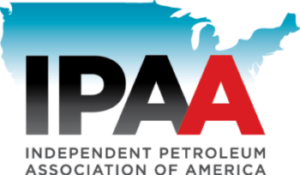“The Independent Petroleum Association of America commends the Environmental Protection Agency for the corrections it has made to the air emissions regulations affecting oil and natural gas production operations. These changes retain the basic framework of air emissions regulations of oil and natural gas production but they modify flawed provisions, particularly in the 2016 New Source Performance Standards fugitive emissions program driven by the political pressures to rush those regulations to completion.
“To be clear, America’s independent oil and natural gas producers recognize the need to manage their air emissions. In fact, prior to the first EPA New Source Performance Standards in 2012, oil and natural gas producers participated in the EPA’s Gas STAR program that identified and developed cost effective emissions technologies. Many of these – reduced emissions completions, low bleed pneumatic controllers, storage tank vapor recovery – were the basis for the 2012 EPA regulations that covered the majority of production emissions. Now, producers continue to be engaged in voluntary efforts that go beyond their regulatory commitments such as The Environmental Partnership and funding research into cost effective controls. The issue for producers has never been whether regulations were necessary; it has always been whether the regulations were sound and cost effective.
“Contrary to the hyperbolic characterizations of these regulatory changes from the Keep It in the Ground environmentalists, EPA regulations on oil and natural gas producers will be retained. Because production air emissions contain both methane and volatile organic compounds, both are managed by the same technologies. While these regulatory revisions change the targeted emission, the specific regulations remain in place and will manage both methane and volatile organic compounds. The 1.2 percent of the U.S. Greenhouse Gas Inventory that comes from oil and natural gas production will still be regulated by federal and state programs.
“The technical changes made by the EPA regulations are important corrections that are necessary to address flawed programs resulting from the politically driven rush to complete the 2016 regulations. Most of these changes relate to the fugitive emissions program. This program relies on expensive and rapidly out dated technology. Among the issues the revisions address are the use of alternative technologies and low production wells.
“The Clean Air Act provides for Alternative Methods of Emissions Limitations to specific regulatory requirements. However, the Act was largely written with large permanent factories as the model and does not function for small, scattered, numerous production wells. The EPA has provided some flexibility in its revised regulations, but the challenge of utilizing more cost effective technologies will continue to be an area of concern.
“When the EPA proposed its fugitive emissions program in 2015, it did not include low production wells – wells that produced less than 15 barrels per day of oil or 90 mcfd of natural gas. When it finalized the regulations, it expanded the scope to include low production wells under pressure from Keep It in the Ground environmentalists. However, the EPA never revised the technology requirements to reflect this expansion. When it proposed its reconsideration in 2018, it attempted to create a distinction for low production wells, but it was unworkable. The finalized revision will allow a wellsite to be excluded from the burdensome fugitive emissions program when the wellsite falls below 15 barrels/day or 90 mcfd. While this change will have little effect on the large hydraulically fractured shale wells that have 15 to 20 wells on the site, it will lift an unreasonable burden from the small business wellsites where there are only one or two wells per site.”








